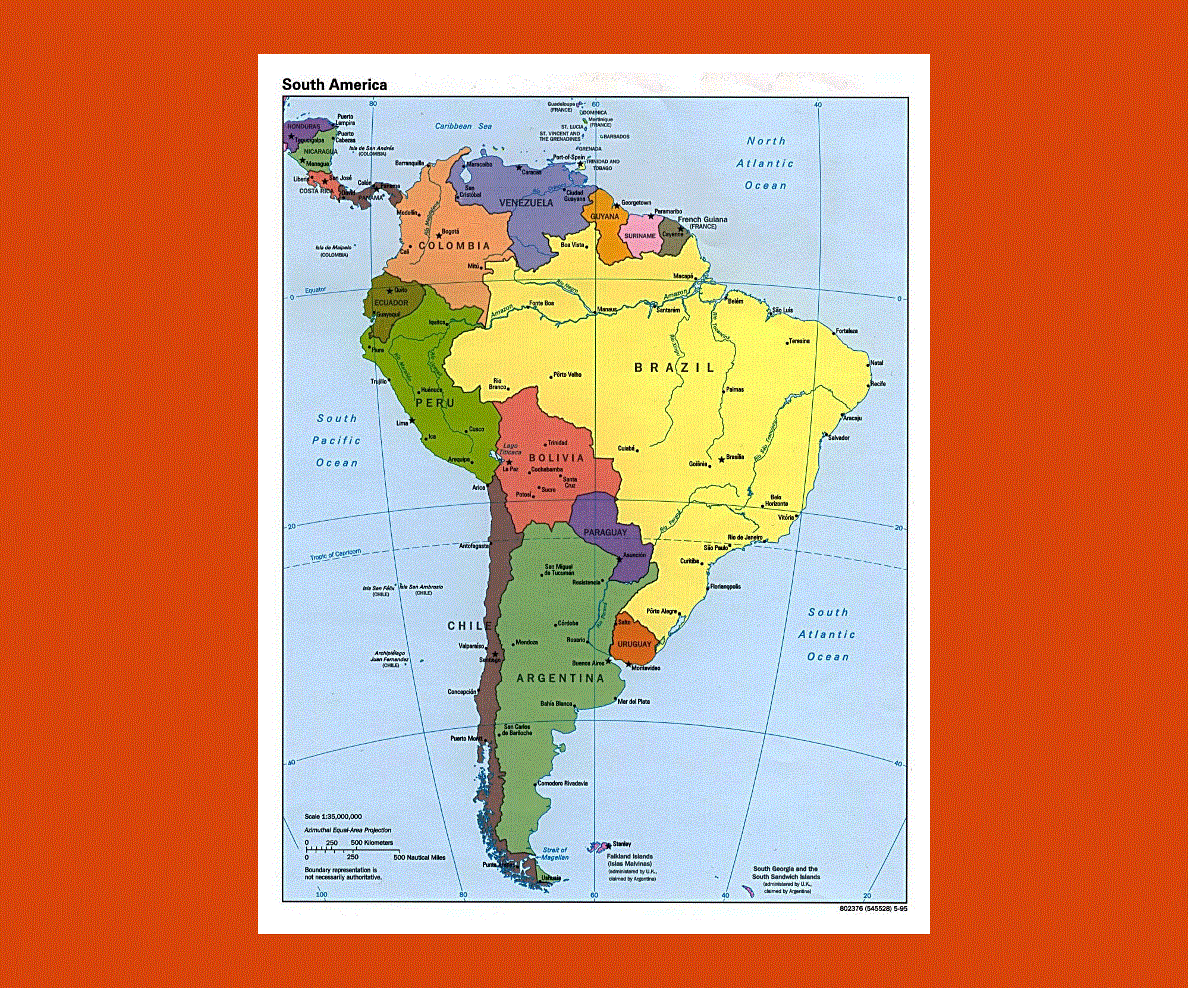
South America’s geologic structure consists of two dissymmetric parts. In the larger, eastern portion are found a number of stable shields forming highland regions, separated by large basins (including the vast Amazon basin). The western portion is occupied almost entirely by the Andes Mountains.

The Andes—formed as the South American Plate drifted westward and forced the oceanic plate to the west under it—constitute a gigantic backbone along the entire Pacific coast of the continent. The basins east of the Andes and between the eastern highlands have been filled with large quantities of sediment washed down by the continent’s great rivers and their tributaries.
No other continent—except Antarctica—penetrates so far to the south. Although the northern part of South America extends north of the Equator and four-fifths of its landmass is located within the tropics, it also reaches subantarctic latitudes. Much of the high Andes lie within the tropics but include extensive zones of temperate or cold climate in the vicinity of the Equator—a circumstance that is unique. The great range in elevation produces an unrivaled diversity of climatic and ecological zones, which is probably the most prominent characteristic of South American geography.
The original inhabitants of South America are believed to have descended from the same Asiatic peoples who migrated to North America from Siberia during the most recent (Wisconsin) ice age. Few of these peoples, however, survived the arrival of Europeans after 1500, most succumbing to disease or mixing with people of European and (especially in Brazil) African origin. Some parts of the continent are now industrialized, with modern cities, but the people in rural areas still follow an agricultural way of life. The wealth of mineral products and renewable resources is considerable, yet economic development in most of the continent lags behind the more industrially advanced regions of the world. Nonetheless, concern has arisen about the rapidly increasing and often destructive exploitation of these resources.
LIST OF COUNTRIES IN THE CONTINENT

For discussion of individual countries of the continent, see specific articles by name—e.g., Argentina, Brazil, and Venezuela. For discussion of major cities of the continent, see the articles Buenos Aires, Caracas, Lima, Rio de Janeiro, and São Paulo. For discussion of the indigenous peoples of the continent, see the articles South American Indian; and pre-Columbian civilizations.
South America’s geologic structure consists of two dissymmetric parts. In the larger, eastern portion are found a number of stable shields forming highland regions, separated by large basins (including the vast Amazon basin). The western portion is occupied almost entirely by the Andes Mountains. The Andes—formed as the South American Plate drifted westward and forced the oceanic plate…
